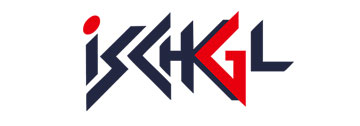Digitalization now: make well-founded decisions, act decisively
Fluid, automated administrative processes, impressive cost savings, trustworthy transparency, and the political participation of citizens – there are many incentives for governments in Europe to digitalize their bureaucracy. In particular the digital strategy and the Digital Europe program of the European Commission have for several years actively demanded and promoted digital transformation of the public sector.
But how do you digitalize the authorities and administrative institutions securely and sustainably? Ideally, by getting the basis right and proceeding in a GDPR-compliant manner: With a highly secure IT network from a leading European manufacturer of network technology who has years of experience in the public sector. Read here how to set up and expand your management network to serve digitalization.
Secure and sovereign digitalization with the NIS2 requirements
Public administration and the research sector will be covered by the EU Network and Information Security Directive, NIS2, in the future. It must be transposed into national law by October 2024. Compliance will be carefully monitored. This makes it all the more important to prepare for the new requirements now and take appropriate measures to comply – also to strengthen your own Digital Sovereignty. We are happy to help you identify these and implement them with digital sovereignty.
Check the need for NIS2 action now and strengthen Digital Sovereignty in the public sector!
Digitalization begins with the IT network
Access to education, culture, and politics for everybody, a networked health system, and seamless public transport systems – these are outwardly visible aspects of a digitalized society. Here all authorities offer their services via modern platforms and tools: Citizens can take care of their affairs with just a few clicks on their smartphones.
The network infrastructure required for this is invisible to the outside world – at least as long as it functions properly. What a network infrastructure can and must do is often underestimated, and this makes it a critical component of digital transformation in public administration.


“The potential cost savings are massive. In Denmark, electronic invoicing saves taxpayers €150 million a year and businesses €50 million a year. If introduced across the EU, annual savings could exceed €50 billion. Meanwhile, in Italy e-procurement systems cut over €3 billion in costs.”
European Commission1
eGovernment benchmark 2022: Moving in the right direction
The range of possible optimizations is wide: The online processing of administrative and tax matters, changes of address, and commercial, marriage, and birth registrations saves an impressive amount of time and money – for citizens as well as for officials. Many European countries have made good progress with their digital citizen services: According to a publication by the EU Commission on the eGovernment Benchmark 2022, Malta (96%) and Estonia (90%) stood out with a high degree of digitalization maturity in the public sector. Countries like Luxembourg, Iceland, the Netherlands, Finland, Denmark, Lithuania, Latvia, and Spain are also above the EU27+ average of 68%.1
The assessment focused on: User-friendliness through central, online and mobile-friendly services, transparency regarding the processes and data used, the cross-border functionality of the services, and the four key factors electronic identification (eID), electronic documents (eDocuments), authentic sources / basic register for basic information about each citizen, and digital official mail. Also included in the ranking is the digital context, which benefits from a secure, reliable IT infrastructure that provides the best connection quality and a good user experience.

Leaving behind proven analog methods is not always easy. Nevertheless, the legal requirements and guidelines surrounding the Digital Europe program and efforts for e-government are increasing, and international benchmarking and shortages of skilled workers are adding to the pressure.
But how do you digitalize public institutions securely and responsibly? What are the individual steps? And what requirements must the technology of a network in the public sector meet?
LANCOM Systems has been a consultant, companion, and network technology supplier for administrative, educational, and medical institutions for many years and knows the lack of time and the uncertainties that go hand in hand with digitalization there. Maximum security, fail-safe systems, data protection, sustainability – LANCOM infrastructures combine state-of-the-art technology, work simplification, and all-round support in efficient, highly secure all-in-one solutions. Making digital transformation easy and carefree.
Digital Europe: Take action now and catch up
Building secure and efficient government and administration networks means actively tackling and supporting the digital transformation of the public sector.
Advantages for all parties
Offers tailored to the needs and rights of users are only possible with a suitable infrastructure:
- Secure access to portals and applications
- Barrier-free use of the digital offerings
- Reliable protection of sensitive data
- User-friendliness
- Fast processing of applications and clarification of concerns.
Modernization also provides an opportunity for authorities and administration to improve processes and thus reduce costs. One contribution here, for example, comes with the fast, secure exchange of information between participating institutions, or by using communication standards for more efficient working and cooperation.


"The Digital Europe Programme is the EU funding programme focused on bringing digital technology to businesses, citizens, and public administrations. Digital services or e-services are seen as crucial to improve public services and engage civil society and address major societal challenges or missions defined by the European Commission."
Interreg Europe2
Just as cities and municipalities grow and change structurally year by year, so does the associated IT infrastructure. Unfortunately, this does not always happen homogeneously or with the technical future in mind. As a result, often many different Internet connections and network components are used – which makes administration more difficult.
In the case of Ischgl, a municipality in Austria with a population of 1,630, LANCOM and Kufgem GmbH have worked hand in hand to set up a modern, digitally sovereign IT network for the schools, kindergartens, the municipal office, and the recycling and building yard, among others. With an infrastructure engineered in Germany and managed via the LANCOM Management Cloud, the municipality is now optimally equipped for the digital future.
No responsibility is as great as the invulnerability of other people. Particularly in disaster control, criteria such as the constant availability and fail-safety of communications and Internet access quickly become a matter of life and death.
LANCOM Systems understands this importance and has developed a highly flexible and secure networking solution for the Rhine-Hunsrück district in Rhineland-Palatinate. The command center, TEL units, and the fire department command center are always connected to each other in securely separated networks by redundant cellular routers and WLAN components, and can be remotely maintained in terms of network technology by the LANCOM Management Cloud.
Aid organizations not only act as rescue networks themselves, which should always be available and function smoothly – they also need a correspondingly reliable network infrastructure in order to be able to carry out their important work. Kindernothilfe is committed to the rights and protection of disadvantaged children and young people in developing countries.
For its diverse projects in 33 countries with over 340 partner organizations and around 1,000 volunteers, it needs a uniform, GDPR-compliant network consisting of LAN and WLAN components as well as cloud management. Read our report to find out how LANCOM and Netzlink Informationstechnik GmbH achieved all of this in just one week:
The public administration’s network infrastructure is key
A prerequisite for any digitalization project is therefore a stable and secure network infrastructure that meets all the essential requirements:

Data protection
- Fulfillment of legal data protection standards, GDPR
- Protection against data loss in the event of local damage events through digital storage of files in the cloud

Digital sovereignty
- Confidentiality through secure connections, encrypted communication
- Procurement of suitable hardware and software, selection of qualified service providers

Accessibility and ability to act
- Accessible via public networks
- Ability to act even in crises thanks to distributed but connected online storage
- Quick change to other connection types if the primary Internet connection fails

Network security
- Early detection of threats (PREVIEW, BSI)
- Protection from cyber attacks
- Resilient networks and software – especially critical infrastructure
- Freedom from backdoors, i.e. no eavesdropping interfaces

Manageability and ease of use
Cloud-based management enables
- Automated commissioning of new components and entire sites
- 24/7 monitoring and troubleshooting for fastest response
- Reduced burden on IT specialists thanks to the best overview, even in larger, distributed networks

Future viability
With the increasing acceptance of digital services, data traffic will increase sharply and new services will follow. Public authorities need to be able to react quickly to innovations and technological trends. To this end, the IT infrastructure must be scalable. With a view to adaptivity and scalability, the IT network infrastructure must be future-proof.
- Versatile WAN interfaces for any type of Internet access at government offices
- Powerful Wi-Fi components based on current standards for integrating internal and external end devices
- LAN infrastructure with performance and port capacities designed for the long-term
Major task, major opportunities
Its complexity makes the digital transformation of the public sector a Herculean task – but one of high societal value. Because citizens expect innovative, digital offerings for their “official” concerns.
In many cases, existing network infrastructures are not sufficient for networking between the authorities and implementing modern administrative processes. IT networks must be renewed, expanded, and adapted – within and between agencies. Maximum data security must be guaranteed. At the same time, there is a shortage of skilled personnel – not to mention limited budgets and a lack of jobs.

One way is to work with an experienced service provider like LANCOM. We support public authorities in the planning and implementing of secure and stable network infrastructures. Together with our IT partners, we offer IT networks and complete solutions “Engineered in Germany”.
Sources and further information
1 eGovernment Benchmark 2022: European Commission
2GovTech and digitalizing the public sector: Interreg Europe, 24 November 2022

Thomas Wenderoth
VP Business & Market Development
thomas.wenderoth@lancom.de
Tel.: +49 2405 49936 258
Mobil: +49 151 17487525














